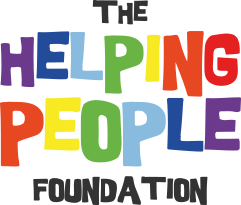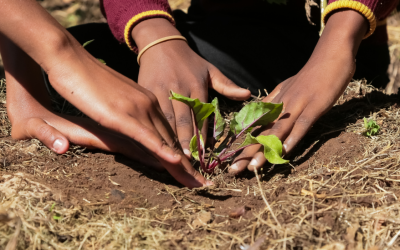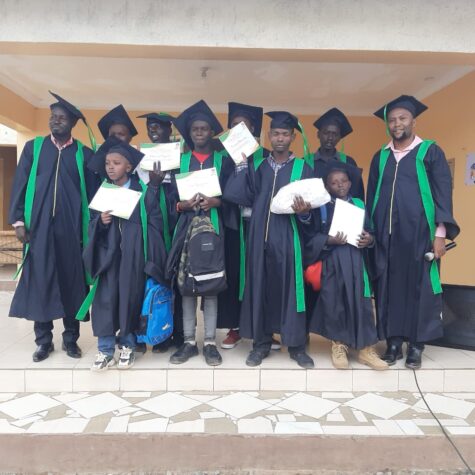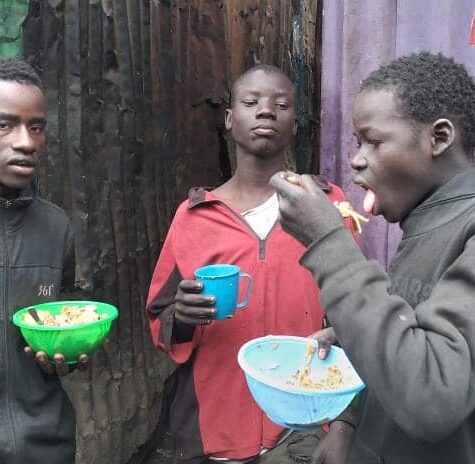CURRENT LIVING CONDITIONS IN KENYA
SCHOOL
The Kenyan education system in its current form has existed since 1984. The education system is divided into eight years of compulsory schooling, four years of secondary education and two to eight years of higher education. At the age of six, children start compulsory school. At the end of compulsory schooling, pupils complete the eighth year with a centrally organised final examination and receive the KCPE (Kenyan Certificate of Primary Education) after passing. This certificate enables students to attend a secondary school. After a period of four years, students there can acquire the KCSE (Kenyan Certificate of Secondary Education), which gives access to tertiary or higher vocational education. In addition to state schools, there are a large number of private institutions, some of which offer online training. However, these are mostly informal or non-formal training courses that do not have state recognition.
MEDICINE
Medical care in Kenya is very poor, especially in rural areas. In 2006, Kenya had just 14 hospital beds and one doctor for every 10,000 inhabitants. The health sector in Kenya mainly deals with tropical diseases such as HIV/AIDS, malaria, hepatitis and the consequences of malnutrition and undernourishment. In 2003, 11% of children were born underweight and 16.5% of children under five were malnourished. According to UNAIDS figures, 7.1% to 8.3% of adult Kenyans (15 - 49 years) are HIV-positive. AIDS is a major issue that has contributed to the decline in life expectancy in Kenya. However, progress has been made in the fight against the epidemic in recent years and the average life expectancy in Kenya has started to rise again. In 2018, it was among the highest in sub-Saharan Africa at 66.6 years, according to World Bank figures. In 2019, infant mortality was 38 per 1,000 births and maternal mortality was 243 per 100,000.
Water
In order to survive, every human needs to drink every day. In total, over one billion people in the world have no access to clean drinking water, a large proportion of whom live in Africa. Kenya also lacks access to clean drinking water. Only about half of the people in Kenya had access to clean drinking water and adequate sanitation in 2016. People in Kenya are forced to drink polluted water or walk long distances to the nearest water point. Often the children suffer from diseases caused by the dirty and contaminated water. Due to climate change and drought, water scarcity is worsening. Especially in rural areas and slums, water is difficult to obtain, often very expensive and scarce.
nutrition
Kenyan cuisine on the Swahili Coast has an oriental influence. It is influenced by India and is therefore sometimes very spicy. In the Kenya highlands, the cuisine becomes much milder and simpler. Some national dishes of Kenya are "ugali", a maize porridge, "nyama choma", grilled meat or "chapati", an Indian flatbread. For breakfast, a sweet yeast pastry, "maandzi" or eggs in various forms are often served.
However, around a quarter of the Kenyan population is undersupplied with food. According to the Kenya Agricultural Research Institute (KAR), 1.7 million people are at risk of starvation and death. Maize is the staple food in Kenya and due to the poor maize harvest, there is no food security anywhere in the country.

Geography
Kenya borders South Sudan to the northwest, Ethiopia to the north, Somalia to the northeast, Tanzania to the south, Uganda to the west and the Indian Ocean to the southeast. Kenya's territory comprises four regions. Kenya's climate is rather tropical, but the country is divided into two climate zones. Temperatures in the coastal area are very hot and inland they are moderated by the high altitude. The warmest months are from October to May, the coldest are from July to August. Temperatures on the Kenyan coast range from 22 °C to 32 °C. It usually cools down at night. Kenya also has two rainy seasons and two dry seasons. Near the equator, the rainy seasons last from October to December and from April to June. The Tana is the longest river in Kenya and is about 800 km long. It flows into the Indian Ocean in two tributaries. Kenya's highest peak is Mount Kenya at 5194 metres and is the second highest mountain in Africa after Kilimanjaro.

History
The land area that is part of today's Kenya is one of the oldest settlement areas on the planet. Kenya's history begins in 1885 as a colony with a German protectorate over the possession of Witu on the coast of the Sultanate of Zanzibar. The Imperial British East Africa Company came to Kenya in 1888 and administered British East Africa until 1895. From 1890, Germany handed over Witu to the British under the so-called Heligoland-Zanzibar Treaty. The British government proclaimed British East Africa as a protectorate in 1895 and released the fertile mountainous region as a settlement colony for whites in 1902. In 1920, Kenya officially became a crown colony, which meant that it went through colonial history and was in the hands of the British for a long time. The then British governor declared a state of emergency in Kenya on 20 October 1952 after the assassination of the colonial administration's top African representative. Afterwards, uprisings began, which are also called the Mau Mau wars. In March 1957, the first general election was held and the first government called Kenya African National Union (KANU) was formed. Jomo Kenyatta became Prime Minister on 01 June 1963. Kenya became independent on 12 December 1963 and the country's first president was Uhuru Kenyatta. Due to a hack attack, the presidential election on 08 August 2017 was declared invalid.

Economics
In East Africa, Kenya is a driving economic force and contributes about 40% of East Africa's economic output. After Nigeria and South Africa, Kenya is one of the three largest economies in sub-Saharan Africa with a GDP of USD 95.9 billion. If we look at prosperity over the past decades, it has been rising steadily, yet around 11 million people of the population live below the absolute poverty line. The unemployment rate in 2019 was 9.3%. Overall, more than half of Kenya's population makes a living from agriculture, but only about 20% of the country's land is arable. Besides coffee and tea, sisal and pyrethrum, which serves as the basis for many insecticides, are also grown. For domestic consumption, mainly maize, wheat, barley, sugar cane, cotton, rice, beans or bananas are cultivated. Kenya depends on tea and coffee exports, industry and tourism. In 2018, Kenya exported €1.2 billion worth of tea, accounting for 22% of Kenya's total exports. The agricultural sector contributes about 35% to GDP, industry about 17% and the service sector through tourism and finance about 44%.
Sources:
Federal Ministry for Economic Cooperation and Development: KENYA - Economic engine in East Africa; URL: https://www.bmz.de/de/laender/kenia (last accessed on: 28.01.2022).
statista: Kenya: total population from 1980 to 2019 and projections to 2026(in millions); URL: https://de.statista.com/statistik/daten/studie/349173/umfrage/gesamtbevoelkerung-von-kenia/ (as of Jan. 21, 2022).
WKO - Austrian Federal Economic Chamber, Statistics Division: Country Profile KENYA; URL: https://wko.at/statistik/laenderprofile/lp-kenia.pdf (as of October 2021)




